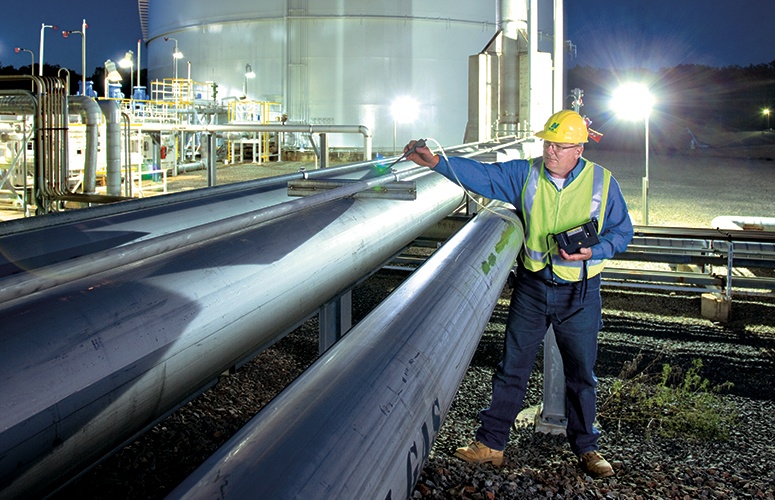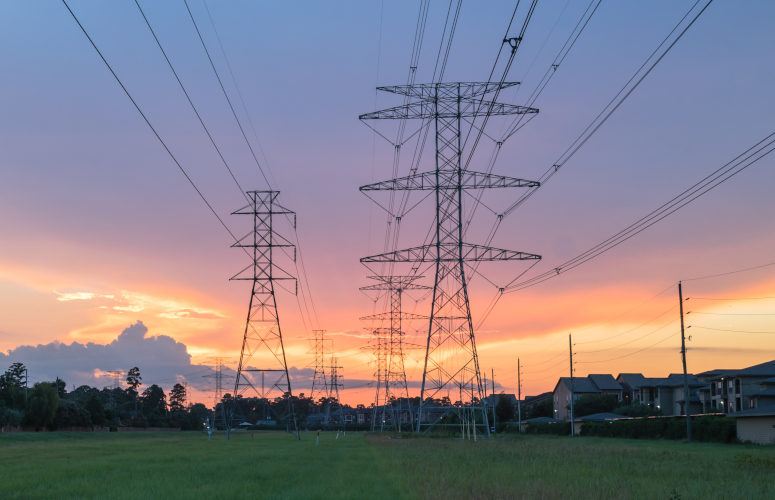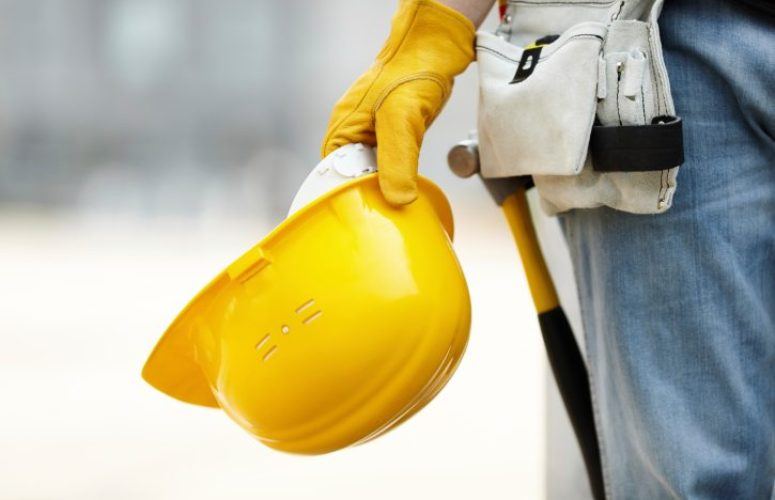
Natural Gas in the Energy Mix
Abundant and cheap supply of this energy source spurs infrastructure investment.
By Anthony Birritteri, Editor-in-Chief On Aug 7, 2018Natural gas prices across the United States have decreased by approximately 50 percent since 2009, thanks to newer fracking technologies and the abundant supply of shale gas. In the northeastern US, this plentiful supply is found in the Marcellus Shale, a region that runs through northern Appalachia, primarily in Pennsylvania, West Virginia, New York, and Ohio. According to industry experts, the natural gas in the Marcellus Shale can last for decades; some say 90 to 100 years.
The lower prices, in turn, have led to utility companies and independent natural gas providers investing in pipeline infrastructure projects, whether for new major pipelines bringing the Marcellus Shale gas to New Jersey, for example, or replacing and strengthening existing gas lines that are old or have been damaged during past hurricanes.
Natural gas prices are expected to remain stable for the foreseeable future. However, what role will natural gas play in the coming decades, especially in New Jersey, where Governor Murphy signed a number of legislative initiatives in late May calling for a boost in renewable energy production and usage? At the same time, the Oyster Creek nuclear facility in Lacey Township is scheduled to begin shutting down operations next month, taking 625 megawatts of power off the grid.
Taking these factors into consideration, will natural gas usage rise? Will costs increase due to the closing of Oyster Creek and the fact that renewable energy sources (wind and solar, for example) are not 100 percent reliable due to daily weather fluctuations, in turn, increasing the dependence on natural gas-generated electricity to make up the power difference?
The Goose that Lays the Golden Egg
According to Joseph J. Fiordaliso, president of the New Jersey Board of Public Utilities (BPU), natural gas will be an important component in helping the state meet the Murphy administration’s renewable energy goals (see full details at the end of this article). “We at the BPU are also excited to help the state achieve the goal of 100 percent green energy by 2050, and natural gas will be one of the bridges to get us there.”
Fiordaliso explains that an energy strategy is like a jigsaw puzzle consisting of many pieces and that “natural gas will be part of that puzzle.” Referring to the abundant Marcellus Shale supply as “the goose that lays the golden egg,” he also suggests that natural gas prices will be stable going forward.
Meanwhile, this price stability has been encouraging utilities to undertake major infrastructure improvement projects over the years.
“We are in a very low cost commodity environment because gas is so abundant and cheap. It has created some headwind so that we can make investments without significantly impacting customers’ bills,” says David Robbins, senior vice president, South Jersey Industries (SJI) and president of its subsidiary, South Jersey Gas (SJG).
Adds Joseph Forline, vice president of gas operations at Public Service Electric & Gas (PSE&G), “A 50 percent reduction in natural gas prices since 2009, driven by the Marcellus Shale, certainly has been huge for our customers. That has given us the ability to invest in our systems without it (associated costs) flowing through to customers’ bills.”
Meanwhile, Steven Westhoven, chief operating officer of New Jersey Resources (NJR), the parent company of New Jersey Natural Gas (NJNG), explains that the decline in natural gas prices is allowing the state and utility companies to even subsidize clean energy projects.
The Infrastructure Projects
The amount of pipeline and other infrastructure projects completed or currently being undertaken in the state is significant, with nearly all utilities replacing their old cast iron and bare steel pipes with modern plastic pipes.
Among the major utilities, NJNG has replaced 236 miles of cast iron and bare steel pipes, at a cost of $150 million, under the first phase of its Safety Acceleration and Facility Enhancement (SAFE) program. The second phase of the project, some 276 miles of pipeline, will cost an estimated $200 million and is scheduled to be completed by 2021.
The utility’s New Jersey Reinvestment in System Enhancements (RISE) program, which was approved by the BPU in 2014, was a $102.5-million program comprised of six projects to enhance the resiliency of the company’s natural gas distribution and transmission systems in the aftermath of Super Storm Sandy. Two more RISE projects are left in the program, according to Westhoven.
Now, NJNG is in the final stages of the permitting process for its Southern Reliability Link (SRL) program, a 30-mile, $200-million intrastate transmission pipeline project. “Right now, all of our natural gas supplies come from the northern part of our system, and we push that gas southward into Ocean and Monmouth counties. SRL provides for a new interconnect into the south, giving us a secondary feed … it gives us added redundancy and resiliency,” Westhoven explains.
Meanwhile, PSE&G is looking to replace its entire cast iron and cast steel pipe system within 20 years. This may seem like a long time, but the utility, a subsidiary of Public Service Enterprise Group, has the largest inventory of cast iron pipes (about 4,000 miles) than any other utility in the country. By the end of this year, the utility will have replaced 450 miles of vintage, high-risk pipes under the first phase of its Gas System Modernization Program (GSMP), valued at $900 million. In early 2019, work will begin on GSMP’s $1.87-billion second phase, which will replace 875 miles of aging pipes and make other gas infrastructure improvements through 2023. The utility reports that residential customer bills would increase by lest than 2 percent, or about $17 per year during the five years.
Forline says the utility always keeps cost increases in mind. “We always understand that price is the No. 1 factor, and that business and residential customers have a limited ability to pay. That is one of the reasons why it is important that we get these infrastructure programs approved now, while gas prices are low,” he says.
SJG is currently in the middle of the second phase of its Accelerated Infrastructure Replacement Program (AIRP), spending $302 million through 2021 to replace all of the cast iron and bare steel pipes in its system. Phase one of AIRP was completed in 2016 at a cost of $141.2 million. From 2013 to 2021, the utility will install 912 miles of new main under the program.
Between 2014 and 2017, the utility spent $110 million on its Storm Hardening and Reliability Program (SHARP) to replace low pressure gas mains with high pressured ones all along the barrier islands, from Cape May to Atlantic City. According to Robbins, SJG recently approached the BPU to file a request for SHARP II. “This will be a three-year program in which we will be spending another $100 million. These efforts will harden our infrastructure against future storms that are of the magnitude of Super Storm Sandy,” Robbins explains.
In the Pipeline … Job Creation
The projects mentioned are tremendous job generators. For example, SJG’s AIRP program has created some 1,200 construction jobs. PSE&G’s second phase of its GSMP program will create some 3,200 jobs, and NJNG’s SAFE program is creating an estimated 1,325 direct and indirect jobs. Meanwhile, its SRL project has created 470 direct and 856 indirect jobs.
These projects do more than create union contractor jobs … they play a role in making New Jersey a desirable place in which to conduct business, counterbalancing the state’s negative factors, such as high taxes and costly regulations. As BPU’s Fiordaliso comments, “Whether we are talking gas, electric or water, good infrastructure drives economic development. Companies are not going to relocate to New Jersey unless there is a good infrastructure base for them on which to operate.”
SJG’s Robbins adds, “We have all heard about the exodus of businesses and people because of the high cost of living in the state. So, what better way to lower the cost of your energy bill than by bringing in natural gas into your county or area? That creates jobs, it encourages businesses to locate here, and it stops the exodus.”
In the same vein, industry experts also see the importance of projects that will bring in more Marcellus Shale gas to New Jersey. Of note is the PennEast Pipeline, which has received FERC approval and, at press-time, is awaiting New Jersey Department of Environmental Protection approval. Scheduled to come online in September 2019, this 120-mile pipeline, which will originate in Dallas, Luzerne County, Pennsylvania and terminate at the Transco pipeline interconnection near Pennington, represents a $1-billion investment, delivering an estimated $1.32 billion in energy savings (based on 2013-2014 and 2017-2018 winter seasons) and creating 12,160 direct and indirect jobs. Both NJR and SJI are member companies in the project.
SJI is also spearheading the BL England pipeline, a 22-mile project that will deliver natural gas to what was once a coal-fired electric generation plant owned by Atlantic City Electric in Upper Township, Camden County. Developers want to convert the facility into a natural-gas-fired plant. This gas would come from SJI’s Cumberland Energy Center in Millville and travel through the Pinelands. The New Jersey Pinelands Commission approved the pipeline’s route, but that decision was appealed more than a year ago due to environmental concerns. At press-time, the appeal still needs to be heard in court.
Robbins comments, “We are very respectful of environmental impacts and have chosen to run the pipeline down existing roadways with very little disruption to the environment.”
He adds that the project will provide a secondary or redundant feed to some 140,000 customers in Cape May County. “If the existing line was ever to go down, those customers would be stranded,” Robbins says.
Rock Bottom?
As mentioned, natural gas prices are not expected to greatly increase in the foreseeable future, but have prices hit rock bottom?
At Direct Energy, one of North America’s largest retail providers of electricity, natural gas, and home and business energy-related services, Lars Cleath, managing advisor, says, “It is difficult to predict markets. Prices have been decreasing for a long time, but we know from history that if prices get too low, producers will be unable to maintain profitably. I don’t know where that price is, but my feeling is that it is not too far from where prices are now.”
Meanwhile, Chuck Wilk, principal and director of business development at Premier Energy Group LLC, a leading energy consulting and brokering company in Middlesex, comments, “We might not be at the bottom of the market now, but at the high-end of the low range.”
Wilk expresses some concern about natural gas storage levels, which he says are 25 percent below last year’s numbers and 19 percent below the five-year average. “That is pretty big. Based on those conditions, you could make an argument that the market should be a lot higher. So, if anything comes up … if there is a supply interruption, if there’s a bad hurricane, [prices] could increase. Looking into my crystal ball, I do think there is some downside potential (price decreases), but there does seem to be a lot more upside risk.”
That said, everyone agrees that no one should underestimate the power of the source; the Marcellus Shale. Its almost 100-year supply continues to spark major pipeline development and economic growth for the region.
Governor Signs Renewable Energy Bill
Legislation impacts utilities and renewable energy industry.
By Ryan A. Benson
On May 23, 2018, New Jersey Governor Phil Murphy signed into law a bill that is intended to boost the Garden State’s renewable energy economy. Directly impacting utilities as well as the renewable energy sector, the bill requires that by 2020, 21 percent of the kilowatt hours sold in New Jersey by any electric power supplier or generation service provider must be generated from Class I renewable energy sources (i.e., solar, wind, wave/tidal, geothermal, landfill gas, anaerobic digestion, fuel cells powered by renewable fuels, and sustainable biomass). This “renewable energy portfolio standard” (“RPS”) rises to 35 percent by 2025 and 50 percent by 2030, and will thus increase demand from utilities for renewable energy.
To facilitate compliance with the rising RPS, the bill reforms the state’s energy economy in several ways, including the following: First, the state’s solar RPS program is being extended through the year 2033, and by 2021 will require that 5.1 percent of energy sold in New Jersey must come from solar generators connected to the distribution system. Second, electricity generation from wind power will be increased, as the bill seeks 3,500 MW of offshore wind generation by 2030 and renews a tax credit for offshore wind activities. Third, utilities will be required to increase energy efficiency such that electricity usage is reduced by 2 percent and natural gas usage (for residential, commercial and industrial uses) is reduced by .75 percent of average annual usage. Finally, to ensure the increase in renewable energy is not wasted, the bill codifies a goal of 600 MW of energy storage by 2021 and 2,000 MW by 2030.
By increasing demand for renewable energy, the bill is expected to spur investment in the renewable energy industry.
About the Author: Ryan A. Benson is an attorney at Connell Foley LLP. He practices environmental law as well as real estate and land use law.
To access more business news, visit NJB News Now.
Related Articles:






